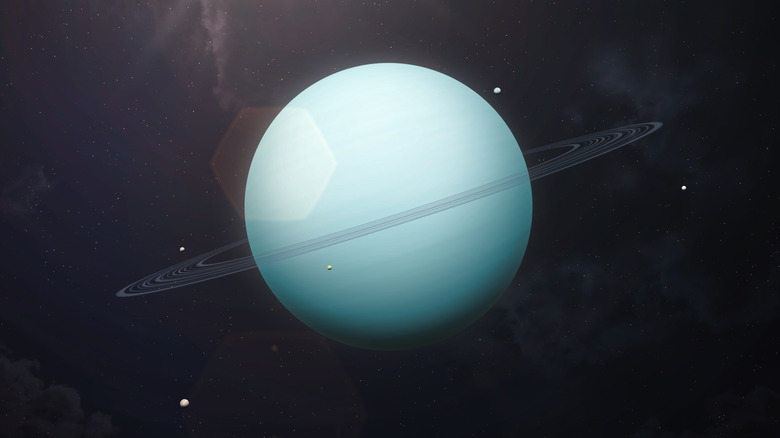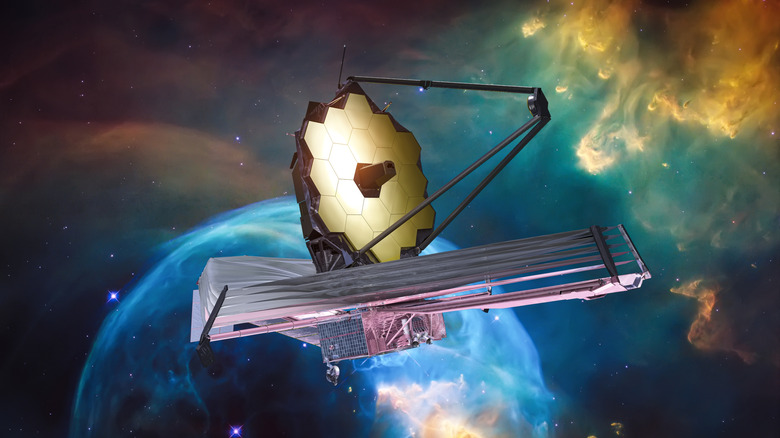Uranus May Have More Moons Than We Previously Thought
A discovery by NASA reveals that Uranus has an additional small moon that was previously hidden to scientists. Discovered by a team led by the Southwest Research Institute using NASA's James Webb Space Telescope, the moon is located nearly 35,000 miles from the center of Uranus, and its nearly circular orbit leads scientists to theorize its current location may be where it was formed.
Before this discovery, the weirdly-tilted planet that is Uranus was thought to have twenty-eight moons, including 5 major moons: Titania, Oberon, Ariel, Miranda, and Umbriel. This discovery brings the new total of known moons to twenty-nine. Scientists often refer to them as the "literary moons," as they're named after characters from works by Shakespeare and Alexander Pope. The new moon is now the 14th member of the smaller moons that orbit inward of the major ones.
Uranus' new moon is just outside its ephemeral rings, and scientists estimate it has a diameter of roughly 6 miles, making it one of the smallest moons. It's likely that the small size of the moon is the reason it has gone undetected, even when Voyager 2 flew by the planet in January 1986. "No other planet has as many small inner moons as Uranus, and their complex inter-relationship with the rings hint at a chaotic history that blurs the boundary between a ring system and a system of moons," said research team member Matthew Tiscareno of the SETI Institute in Mountain View, California.
Scientists discover Uranus has 29 moons
Uranus' new moon currently goes by the name S/2025 U1 and was detected February 2, 2025 during a Webb observation. This observation was part of the telescope's General Observer program, which provides scientists the chance to take advantage of its advanced technology through investigative proposals. Scientists were able to spot this new moon by taking ten 40-minute long exposure images with Webb's Near-Infrared Camera (NIRCam), which used a wide band F150W2 filter to transmit infrared wavelengths 1 to 2.4 micrometers in size to obtain data.
"The new moon is smaller and much fainter than the smallest of the previously known inner moons," says Tiscareno, "making it likely that even more complexity remains to be discovered." Prior to this discovery, Scott Sheppard from Carnegie Science observed a new moon of Uranus in November 2023. The moon, designated as S/2023 U1, was discovered thanks to the Magellan telescopes at Carnegie Science's Las Campanas Observatory in Chile.
Along with being responsible for discovering Uranus' new moon, the James Webb Space Telescope also helped provide some of the most detailed images of the planet in December 2023. The remarkably clear images of the planet's rings unveiled a plethora of new information, including details of the often elusive Zeta ring. Scientists hope that S/2025 U1 can help provide more insight into the planet's rings, including how they were shaped, their composition, and what process formed them.

